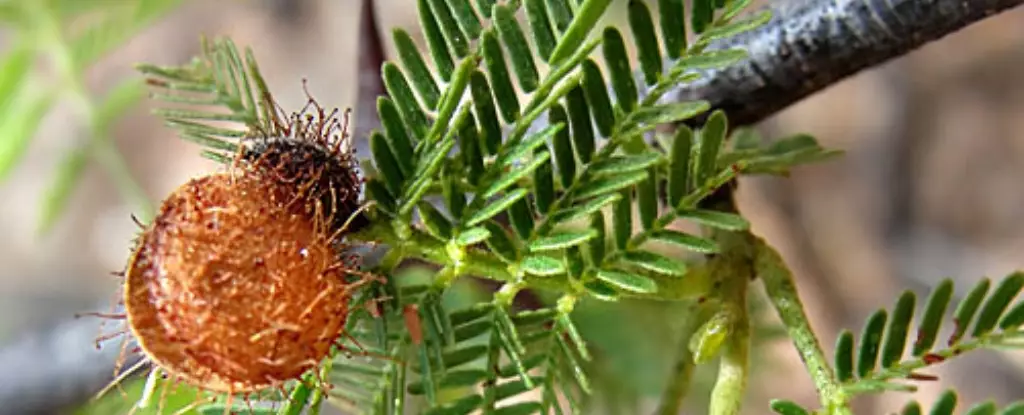Across the landscapes of Brazil, the jurema preta plant, known for its potent psychoactive properties, has been a vital component of Indigenous rituals for centuries. This sacred plant, whose roots contain a significant amount of dimethyltryptamine (DMT), is now emerging as a promising avenue for treating mental health challenges, particularly depression. While the plant’s cultural significance is deeply rooted in traditions that involve ceremonial use and spiritual exploration, its potential to address modern psychological dilemmas is garnering attention in scientific circles. Recent studies have begun to unveil a connection between the transformative effects of jurema preta and relief for individuals grappling with chronic mental health concerns.
The Personal Journey Towards Healing
Guaracy Carvajal, a 31-year-old software programmer, turned to jurema preta in his quest for relief from longstanding depression. Experimenting with DMT extraction methods he discovered online, Carvajal’s experience offers a compelling insight into the possible therapeutic properties of this ancient plant. He describes the effects as unlocking life-changing realizations: “It feels like you’ve solved something in your life.” This sentiment underscores the deep emotional and psychological ramifications that such psychedelics might hold for individuals seeking resolution amid the turmoil of mental illness. However, such statements also highlight a critical aspect of this exploration: the subjective nature of healing experiences, which can vary dramatically from person to person.
Scientific Investigations and Real-World Implications
The empirical investigation of DMT as a treatment for depression is being led by physicist Draulio Araujo at the Brain Institute of the Federal University of Rio Grande do Norte. Araujo’s research indicates that patients demonstrate significant symptom improvements as quickly as one day post-treatment. However, he is also cautious to stress that “this is not a magic cure.” Such nuance is important when considering the broader implications of psychedelic therapy; while some individuals may experience rapid effects and deep personal insights, others might find little to no benefit, emphasizing the need for personalized approaches in treatment methodologies.
The clinical environment surrounding the administration of vaporized DMT adds an extra layer of reassurance. Araujo, alongside his team, ensures that participants are thoroughly supported with psychological therapy during and after their sessions, a reminder that true healing often requires more than just a substance; it demands an integrative approach that considers the mind, body, and emotional landscape. Incorporating established therapeutic frameworks, such as cognitive behavioral therapy, alongside psychedelics provides a robust scaffolding for emotional healing, suggesting that the future of mental health treatment may lie in such dynamic combinations.
Culture Meets Science
The phenomenon surrounding jurema preta is deeply steeped in cultural practices, particularly in northeastern Brazil, where the plant is part of rituals characterized by vibrant dancing and communal gatherings. These ancient ceremonies provide a unique lens through which we can view the interaction between spirituality and healing. As Joyce Souza observes during a jurema ceremony, the experiences are less about hallucinations and more about unlocking personal insights and enhancing self-communication. This perspective not only speaks to the potential therapeutic benefits of the plant but also contributes to an important discourse on how traditional practices can influence contemporary healing methodologies.
In a society where the legality of DMT is complex—prohibited for consumption outside of religious or scientific contexts—jurema’s legitimate use highlights a broader conversation about the intersection of indigenous rights, cultural heritage, and modern mental health practices. While the cultivation and possession of jurema are legal, the restrictions on consumption force a dialogue about who gets to access these transformative experiences. As the stigma around psychedelics continues to diminish, understanding the cultural roots of such practices becomes crucial in ensuring that treatments like DMT are approached with respect and sensitivity.
Looking Forward: The Future of Psychedelics in Healing
Araujo’s aspirations for future research, aiming to include a hundred patients in a more extensive study, reflect a growing optimism for the inclusion of psychedelics in mainstream mental health treatment. As he notes, substantial advancements in understanding DMT’s therapeutic potential can redefine how we approach depression and other mental health disorders. The possibility of achieving a “clear picture” of its efficacy within a five-year framework offers hope that jurema preta and its kin might transform the landscape of mental health treatment.
Moreover, the emergence of such studies raises essential ethical questions regarding accessibility, cultural appropriation, and the integration of traditional practices within modern healthcare. The ongoing investigation into jurema preta and DMT is not just about treatment; it symbolizes a burgeoning respect for ancient wisdom, honoring the past while addressing present-day challenges. Exploring these dimensions ensures that the narrative surrounding psychedelics goes beyond mere pharmacology and taps into the deep, interconnected tapestry of human experience, culture, and transformation.

